The question of how hotel rooms are priced is a particularly nuanced one. The supply of traditional hotel rooms is pretty much fixed in the short term: when demand increases in the peak season, you can’t just instantly build more hotels to meet the opportunity. That means the price for a hotel room skyrockets for travelers during the busy season.
At the same time, if hotels raise their prices too much, they risk a pretty bad outcome: the rooms could sit empty and not generate any revenue at all!
Hotels play a delicate balancing act with their pricing, aided by revenue management software. They need to predict when demand will be high, and just how richly they can price the room based on competition, local events, and people’s vacation schedules. At the same time, during periods of lower demand, they need to make sure the prices are enticing enough that their rooms aren’t sitting empty. The result is that prices are highly volatile and fluctuate dramatically by season.
So, we thought we’d take a look at how hotel prices in various cities in America vacillate by season. One of our customers, Hipmunk (the travel search engine) provided us with the data from all of 2014 about how much hotels in US cities charge based on the the time of year. Over the course of the year, hotel prices change a lot.
***
Take for example the case of Sonoma, California, a wine country destination an hour from San Francisco. The average price spikes up rapidly in May and stays that way till the end of October when the “harvest” season comes to a close. In the off season, rental rates are half as expensive.
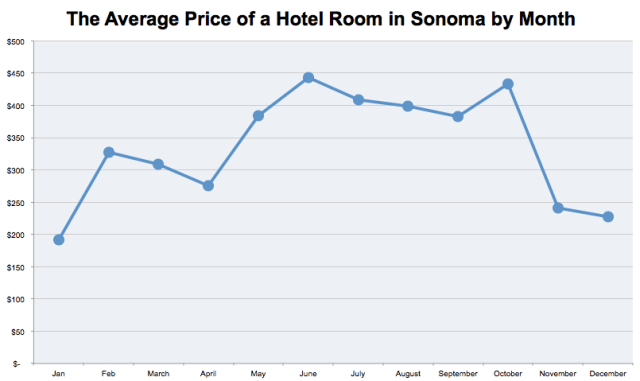
Source: Priceonomics analysis; data via Hipmunk.
Demand is so strong in the summer (and supply is especially limited and inelastic because short term vacation rentals are banned in the city of Sonoma). This results in the city having the highest hotel room prices during the summer, of all the vacation destinations we looked at.
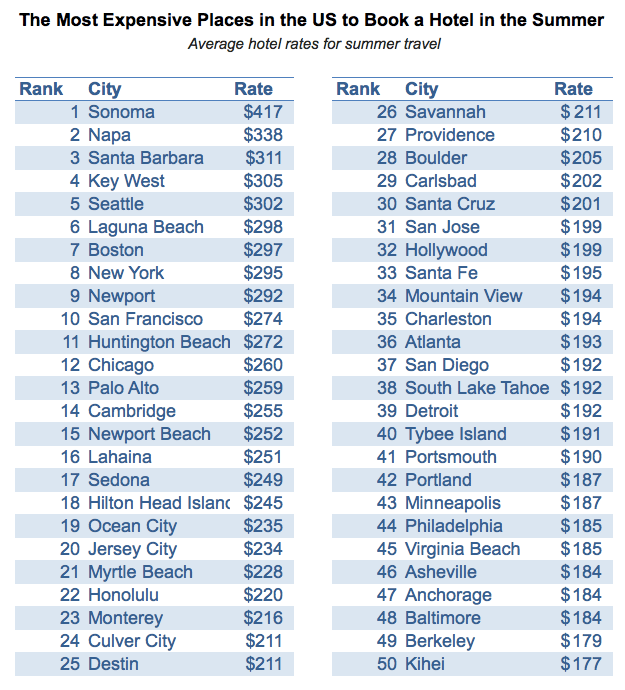
Source: Priceonomics analysis; data via Hipmunk.
The phenomenon of “jacking up the prices” in the summer is particularly important for cities that thrive as being a summer destination and then close up shop in the off season. Next, we look at the cities that raise their prices the most in summer months.
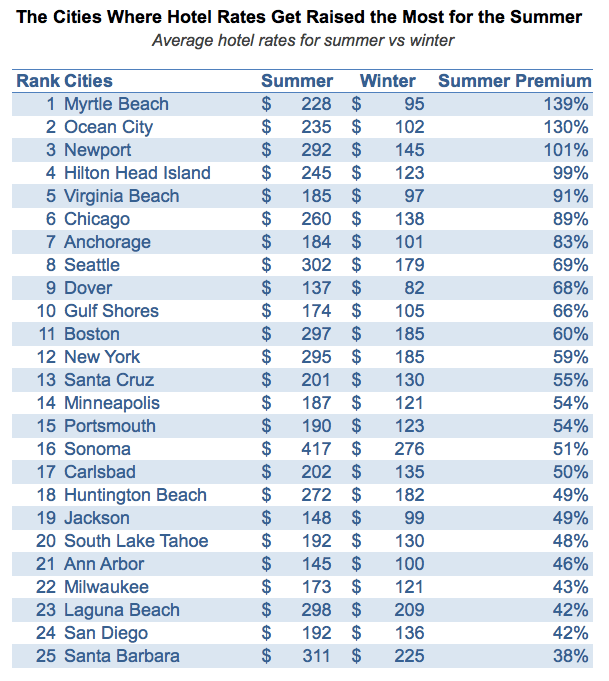
For East coast beach towns like Myrtle Beach, Ocean City and Newport, it’s feast in the summer and then famine in in the winter.
Interestingly, some cities have the opposite pricing dynamic. They’re much cheaper in the summer than in the winter, usually because they’re oppressively hot in the summer, and pleasant the rest of the year.
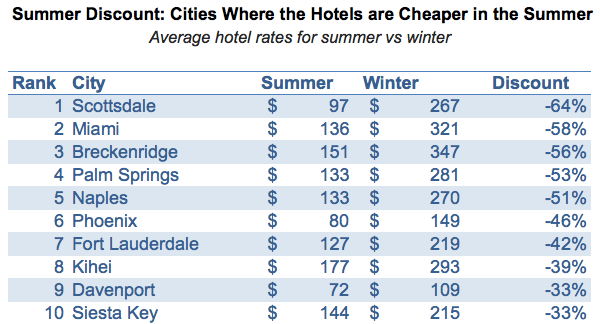
Finally, want to puzzle over how hotels vary by season and see if you can find any good deals? Below is a table how prices vary by season for 50 popular vacation destinations. The tantalizing thing about this data is that when prices are the lowest typically corresponds to when you are least likely to want to visit. Nevertheless, it shows that if you can dodge peak season, you can save money.
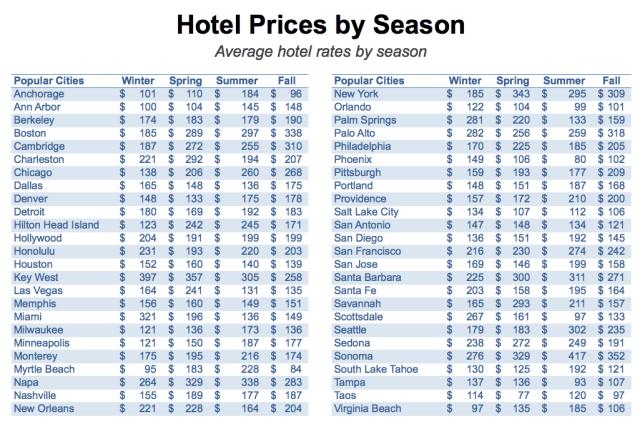
Source: Priceonomics analysis; data via Hipmunk.
***
On a parting note, it’s worth considering how vacation rentals will play into this pricing dynamic. For centuries, when demand for hotels has increased, supply has taken a long time to catch up (you have to build a whole new hotel!). Now, however, when prices are booming (say for the Berkshire Hathaway shareholders’ meeting in Omaha), enterprising residents can simply start renting out their homes to travelers. In the parlance of Economics 101, vacation rentals, are a “substitute” for hotel rooms.
The days of hotel prices fluctuating wildly like this may soon be coming to an end. When demand increases, hotel prices will still go up, but not as much as in the past because peoples’ homes and spare bedrooms can pick up the slack.
This post was written by Rohin Dhar. Follow him on Twitter. To get occasional notifications when we write blog posts, sign up for our email list.




